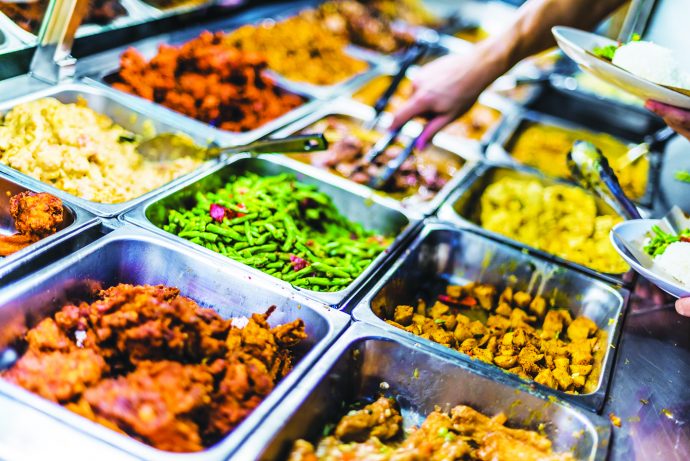In today’s fast-paced world, it’s common for families to prioritise convenience when it comes to meals. With busy schedules and endless to-do lists, frozen foods, fast foods, take-aways, and deliveries often become the go-to choices. While these convenience foods can save time, they may not always be the healthiest option. However, eating healthy doesn’t have to be time-consuming. With a few smart strategies, you can balance convenience with nutrition and ensure your family’s diet stays on track.
Tips for healthy, convenient eating
- Focus on the basics
When planning meals, it’s essential to focus on Balance, Moderation, and Variety (BMV). A balanced meal includes a proper mix of food groups – vegetables, fruits, grains and cereals, lean or plant proteins, dairy – to ensure adequate intake of energy, vitamins and minerals for overall health. Moderation is key to ensuring you don’t overconsume. Even with healthy foods, controlling the amount and serving size of food keeps your diet in check.
Incorporating variety into your meals is crucial as it ensures you obtain a wide range of nutrients while keeping your meals enjoyable. By consuming a variety of fruits, vegetables, proteins and grains within and across food groups throughout the week, you can prevent nutritional gaps and food fatigue. Refer to the Malaysian Food Pyramid and Malaysian Healthy Plate as guidelines to help you achieve BMV.
- Easy home cooking
Not all meals need to be made from scratch but combining take-away and home-cooked elements can make a big difference. For example, you can purchase a variety of pre-cooked dishes from a mixed rice stall but cook the rice at home and serve fresh fruits for dessert. Simple, one-pot meals are another great option – just toss everything into a single pot, let it cook, and dinner is ready in no time.
Modern kitchen gadgets like pressure cookers, slow cookers and air fryers can drastically reduce cooking time while allowing you to prepare healthy meals. These tools are perfect for busy families who want to cook nutritious dishes efficiently without spending hours in the kitchen.
Planning is crucial to balancing convenience with nutrition. Set aside some time on the weekend to prepare ingredients or even entire meals in advance. Create a weekly grocery list focused on healthy options, and stock up on vegetables and lean proteins for quick meals. Remember to keep food safety in mind – freeze meals if you don’t plan to eat them within a few days.
- Making the most of take-away food
Sometimes, take-away or ready-to-eat options are the most practical choice. When you do opt for these, there are ways to make them healthier:
- Choose carefully: Look for grilled, steamed or baked dishes instead of fried ones. If you’re ordering fast food, consider healthier snacks or sides, such as a side salad or steamed vegetables, to balance your meal.
- Practice portion control: Many restaurant portions are oversized, so try ordering less portion or sharing dishes with others. This can help you avoid overeating and reduce the intake of excess calories. You can also pack extra portions as takeaways to manage the portion size and reduce food waste but be sure to store leftovers properly.
- Compare food labels: If you’re picking up ready-to-eat foods from the store, take a moment to read the labels. Compare the nutritional content of different options and go for those with lower levels of salt, oil and sugar (SOS).
At the end of the day, it’s the nutritional value and composition of foods that matter most, not whether they’re home-cooked or store-bought. By paying attention to what you eat and making smart choices, you can enjoy the convenience of modern life without sacrificing your family’s health. Healthy eating is always within reach – you just need to know where to look and how to make it work for you.





